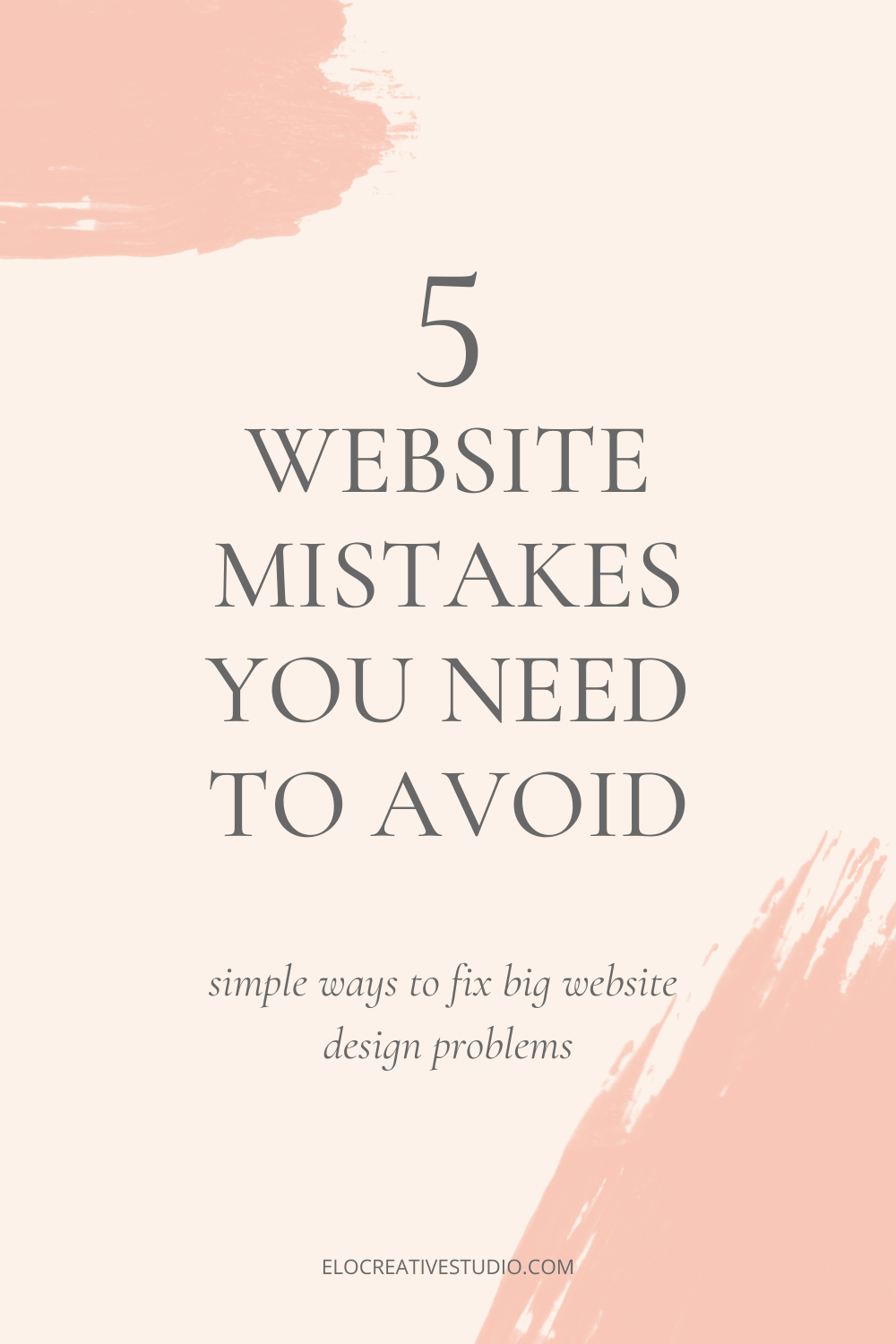5 Website Design Mistakes That Make Your Website Look Unprofessional
Simple ways to fix big website design problems
Some of the most common website mistakes are also some of the easiest to fix. With a little time and attention to detail, you can solve these problems before they happen, and fix any web design faux pas! Continue reading below for big website design issues and the best ways to fix them.
Forgetting about mobile optimization
With more than half of internet browsing happening on phones these days, this is the most important fix on this list. 85% of adults think that a website viewed on their phone should look as good, if not better, than it does on a desktop.
If your website isn’t easy to read, intuitive to navigate, and quick to load on mobile, you’re handicapping your business. Make sure that your design elements translate on the mobile site version, or at the very least make sure that any images, patterns, and backgrounds aren’t interfering with text and navigation items.
This is one of the reasons why I love Squarespace - it automatically makes your website optimized for a smooth mobile experience, with little effort on your part.
Not having enough calls to action
People are busy. They’re also overstimulated with tons of content from tons of different sources every day. If your marketing efforts and SEO tweaking have resulted in someone finding and visiting your website (hooray!) the last thing that you want after all of your hard work is for them to click off of your site moments after they arrive.
Call to Actions - or CTAs - are interactive elements that prompt your readers to, well, take action. Whether that’s clicking through to another page on your site, purchasing a product, signing up for your email newsletter, or reading another of your blog posts.
Clear CTAs in the form of buttons or customized text anchor links placed strategically with headlines and blocks of copy are a must to keep your audience engaged with your content.
They guide your readers to the next place that you want them to be, which can funnel them from browsing to buying.
Slow-loading pages
It takes your audience 0.05 seconds to form an opinion about your website. If your website pages don’t load immediately, you’re all but guaranteeing that visitors will abandon your site immediately. Slow loading pages also hurt your SEO - Google doesn’t like slow sites!
Images are usually the culprit behind slow loading webpages. Always make sure that you’re using an online image compressor like TinyPNG or Optimizilla to reduce your image sizes before uploading them to your site. They’re free tools, and they won’t reduce the quality of your images.
If you’re using a video banner, make sure you keep the video file small (around 25 frames per second, and with a resolution of 720p) and add a mobile fallback image, just in case the video takes a moment to load.
Forgetting to customize your site favicon
This is such an easy fix, but I see it all the time! If you don’t upload your own favicon image, the Squarespace block icon will appear instead. It’s the quickest way to make your site look like a DIY job.
Your favicon is the tiny icon that displays in the browser window tab when a visitor lands on your site. It’s very easy to add and will instantly help build your site’s credibility and brand recognition.
To update it in Squarespace, go to Design > Browser Icon, and upload your favicon image. Use your brand’s logomark or another simple design - remember, it’s going to be too tiny to read any text! Think about the simplicity of favicons from brands like Pinterest, Google, and Canva.
Broken site links
Nothing will make me click away from a website faster than wonky links. If the links in your header or footer navigation aren’t working, your buttons aren’t clickable, or a link takes me to a 404 page, I automatically assume that your business either just launched or is no longer active. It’s an automatic red flag that undermines the credibility and professionalism of your entire brand.
Always double and triple-check your links before you go live. This should be one of the steps on your Website Launch List! You can use tools like Ahrefs (also a great SEO tool!) or Dead Link Checker to scan your site for problems.
Make sure you’re triple-checking links when using your marketing tools, too! Let’s say you’re browsing Pinterest and a Pin with a helpful blog post headline catches your eye. You click through, only to be taken to the site’s homepage. Or an Instagram “link in bio” takes you to completely different, unrelated content. How frustrating, right? Make sure that if you’re promoting content, your CTAs actually take your audience exactly where they want to go - no one has time or energy to dig for content these days!
I hope these tips were helpful for you!
Getting ready to launch your website? Make sure you have a Website Launch Checklist!


